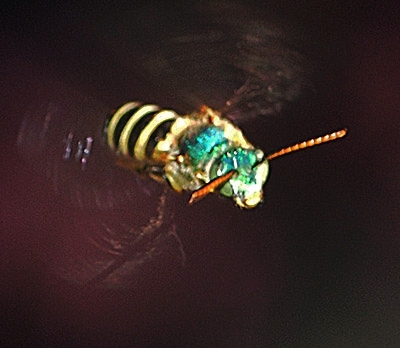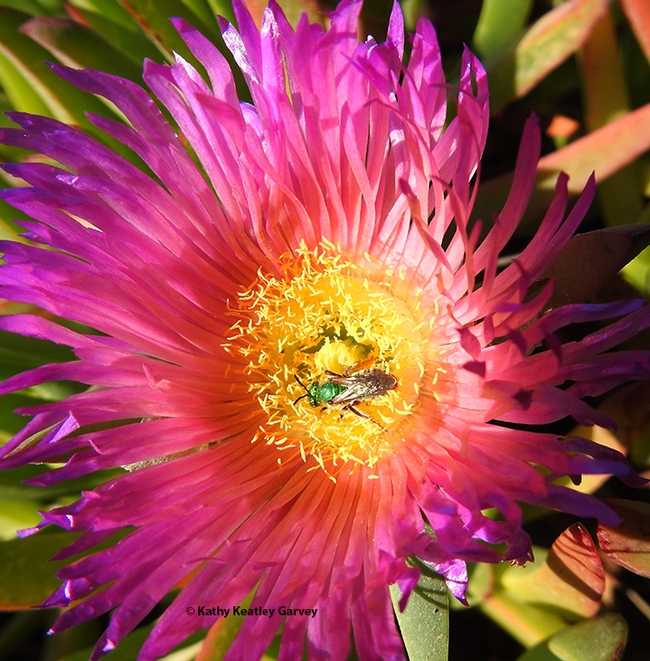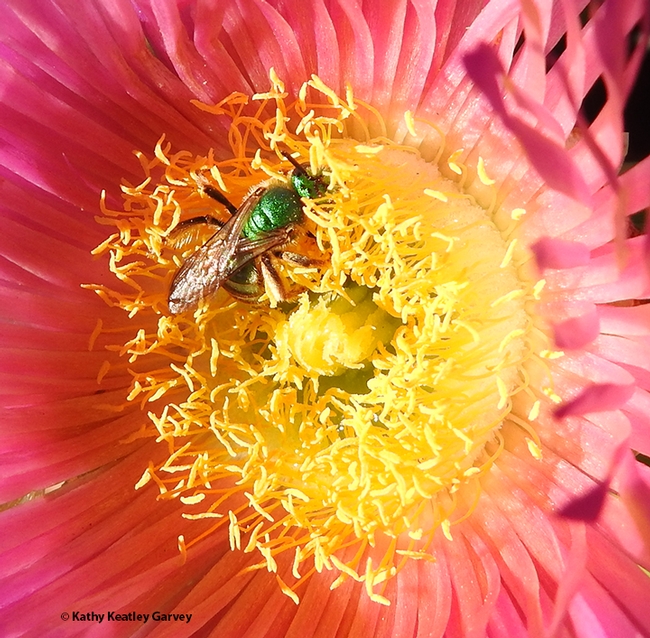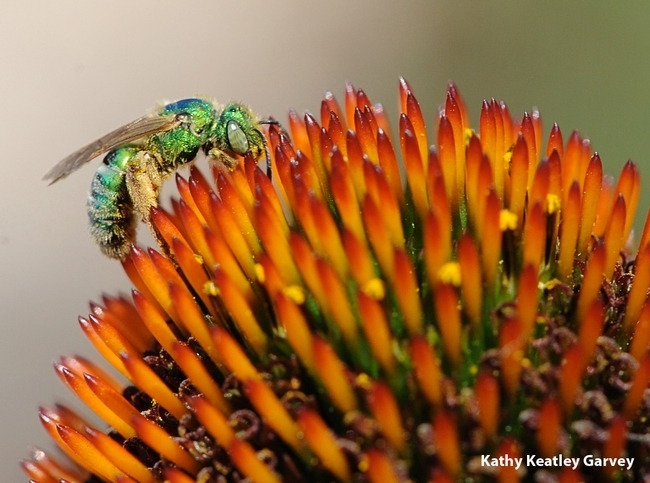
What was that foraging on a pink iceplant blossom near a path to the ocean? A metallic green sweat bee, Agapostemon texanus, also called an ultra green sweat bee.
We usually don't see A. texanus unless it's spring or summer, but there it was, out of season. Or rather, there "he" was. Males and females are easily distinguishable. The female is solid green, from head to thorax to abdomen, while the green coloration on the male appears on the head and thorax.
We remember pollinator specialist Robbin Thorp (1933-2019) emeritus professor of entomology at UC Davis, talking about them. He delighted in seeing them at his monitoring site, the Department of Entomology and Nematology's Häagen-Dazs Honey Bee Haven on Bee Biology Road, UC Davis campus. The Agapostemon are members of the Halictinae family. They are often called "sweat bees" because they are attracted to human sweat, probably for the salt.
Green sweat bees are among the bees featured in the book, "California Bees and Blooms: A Guide for Gardeners and Naturalists," co-authored by the University of California team of Gordon Frankie, UC Berkeley; Robbin Thorp, UC Davis; and UC Berkeley affiliates Rollin Coville (photographer and entomologist) and Barbara Ertter (plant specialist). Frankie, Thorp, Coville and Ertter (and others) also published "Native Bees Are a Rich Natural Resource in Urban California Gardens" in California Agriculture.
Attached Images:

A male metallic green sweat bee, Agapostemon texanus, foraging on iceplant on Nov. 5 at a Bodega Bay's Doran Beach. (Photo by Kathy Keatley Garvey)

Close-up of a male metallic green sweat bee on an iceplant on Nov. 5 at a Bodega Bay's Doran Beach. (Photo by Kathy Keatley Garvey)

A female metallic green sweat bee nectaring on a purple coneflower in June 2011 at the Häagen-Dazs Honey Bee Haven, part of the UC Davis Department of Entomology and Nematology. The female is solid green from head to thorax to abdomen, while the male's head and thorax are green, but not the abdomen. (Photo by Kathy Keatley Garvey)